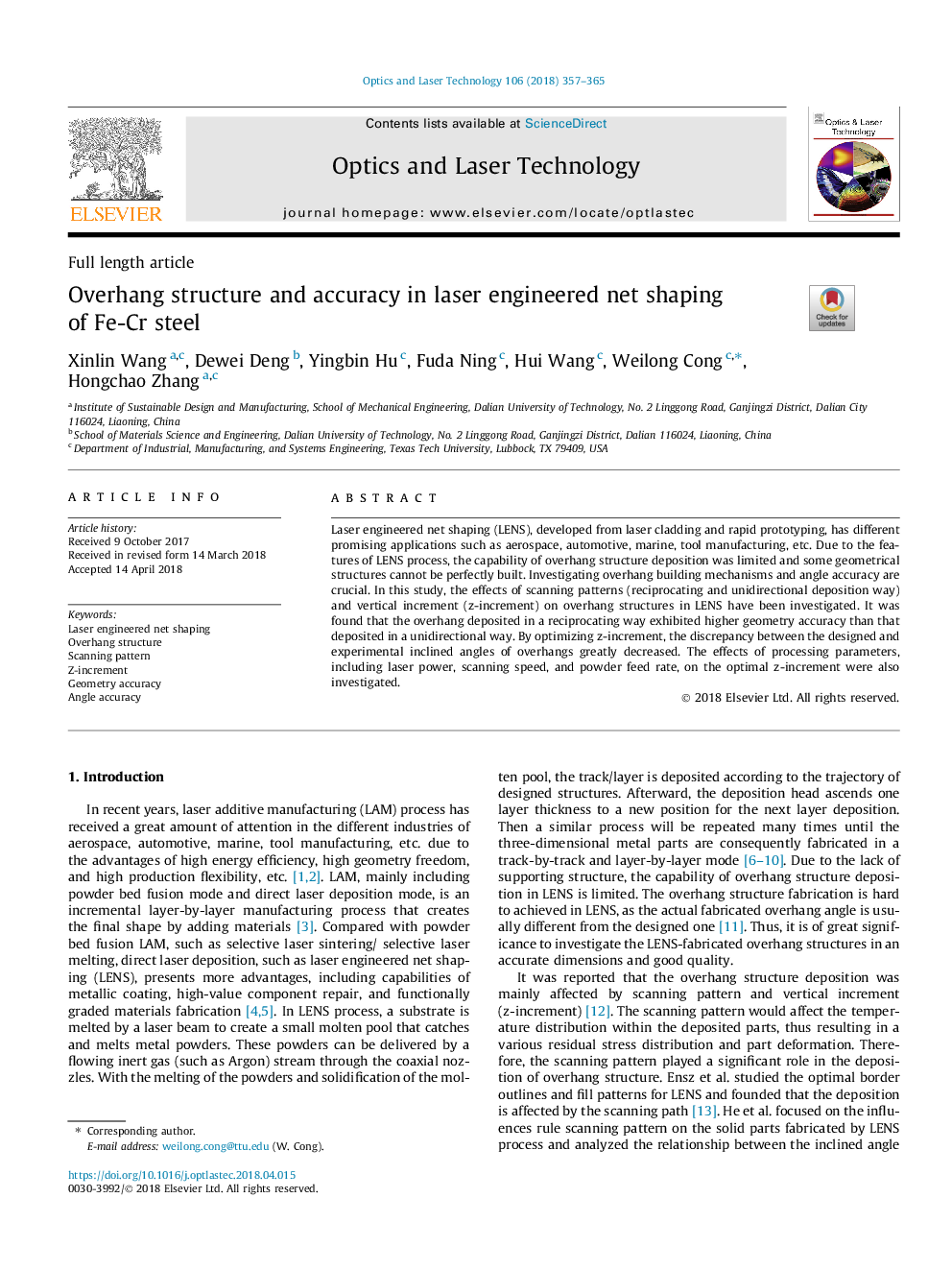| Article ID | Journal | Published Year | Pages | File Type |
|---|---|---|---|---|
| 7128606 | Optics & Laser Technology | 2018 | 9 Pages |
Abstract
Laser engineered net shaping (LENS), developed from laser cladding and rapid prototyping, has different promising applications such as aerospace, automotive, marine, tool manufacturing, etc. Due to the features of LENS process, the capability of overhang structure deposition was limited and some geometrical structures cannot be perfectly built. Investigating overhang building mechanisms and angle accuracy are crucial. In this study, the effects of scanning patterns (reciprocating and unidirectional deposition way) and vertical increment (z-increment) on overhang structures in LENS have been investigated. It was found that the overhang deposited in a reciprocating way exhibited higher geometry accuracy than that deposited in a unidirectional way. By optimizing z-increment, the discrepancy between the designed and experimental inclined angles of overhangs greatly decreased. The effects of processing parameters, including laser power, scanning speed, and powder feed rate, on the optimal z-increment were also investigated.
Keywords
Related Topics
Physical Sciences and Engineering
Engineering
Electrical and Electronic Engineering
Authors
Xinlin Wang, Dewei Deng, Yingbin Hu, Fuda Ning, Hui Wang, Weilong Cong, Hongchao Zhang,
